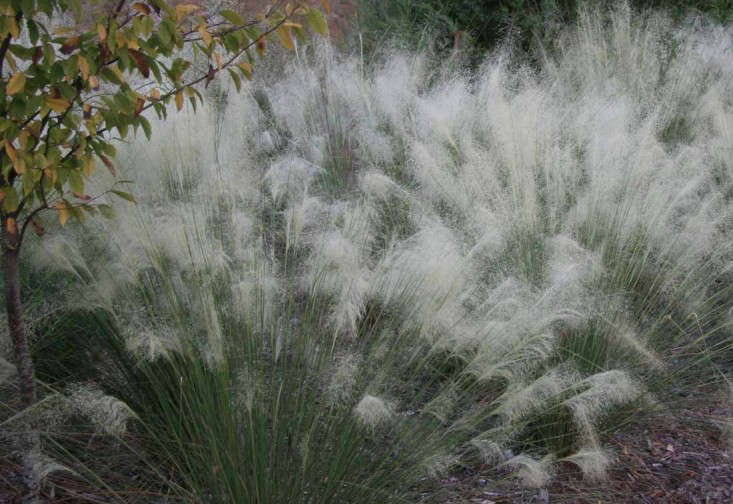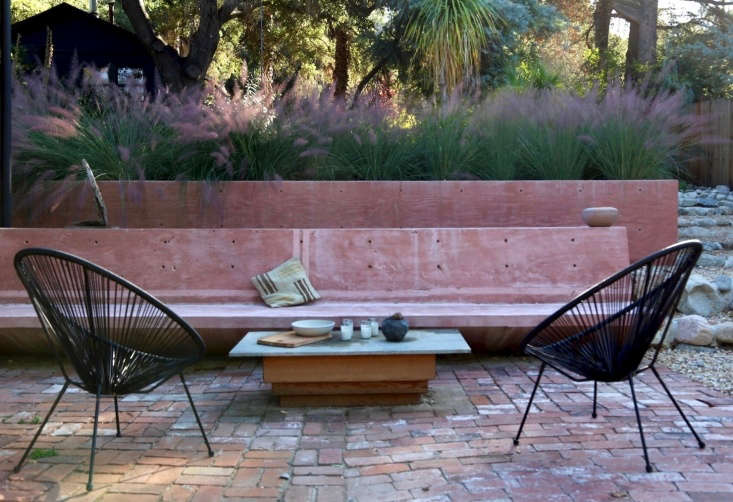Muhly Grass, Muhlenbergia: “Designated Survivor”
Drought-tolerant and dramatic, Muhlenbergia can be the plant-and-go gardener’s best friend. And don’t let the pink color of the most common muhly, Muhlenbergia capillaris, fool you—this is no princess. There are more than 150 species of this hardy, carefree grass. Once established, muhly grasses can flourish in hot, sun-baked, and even rocky soil.
The grasses are named for 18th-century self-taught botanist Gotthilf Henry Ernest Muhlenberg, a Lutheran minister and early member of the American Philosophical Society (the New World’s first scientific association). These days, however, the feathery pink M. capillaris—the most widely known species in the genus—no longer grows in the wild in his home state of Pennsylvania.
Read on for more of what makes capillaris and other muhlys magnificent.

Muhlenbergia capillaris, commonly called pink muhly grass or pink hair grass, blooms through the fall season. It’s native to the eastern US, Mexico, and the West Indies and can thrive in sandy or gravelly soil. It’s also a frequent resident of prairies and coastal plains.

Pink muhly en masse adds drama wherever it’s planted. Vibrant late-fall color makes it ideal for perennial borders. The pink wisps turn to light tan seed heads that stay true until harsh winter winds and snow hit. Come early spring, cut back to repeat the action.

The cultivar M. capillaris ‘White Cloud’ features soft, white seed heads. It’s more upright and open than its pink sister and grows a bit taller. ‘White Cloud’ blooms several weeks after pink muhly, so by interplanting gardeners can stretch their muhly season.
Cheat Sheet

- The airy plumes of M. capillaris look good in the back of a border, where the grasses can create the illusion of a hazy, distant horizon even in a small garden.
- You can tell Muhlenbergia apart from other grasses by its unbranched stems, upright growth, and clustered flowers along its stems.
- Muhly grass grows in clumps, making it easy to interplant with other flowering perennials.
Keep It Alive
- Muhlys need well-drained soil, full sun, and dry conditions to look their best. They are unhappy in shade or with wet feet.
- They’re not particularly sensitive to fertilizer salts, but some growers suggest a slow-release fertilizer at a medium rate.
- In zones with cold winters, planting late in the season in an area with poor drainage is a double no-no. Get them in the ground by mid-October at the latest and make sure the winter drainage is good.

Muhlenbergia steps away from its cotton candy reputation with pine muhly (M. dubia), a dense and upright grass. “Dubia” comes from the Latin word “dubi,” meaning doubtful or uncertain, a reference to the idea that pine muhly doesn’t conform to what’s thought of as normal for a Muhlenbergia. Here, pine muhly’s narrow color spikes age to tan in late summer.

Lindheimer’s muhly thrives in Texas and can be found in many naturalistic landscapes. M. lindheimeri was named after the “Father of Texas Botany” Ferdinand Jacob Lindheimer, the first permanent resident plant collector in Texas. Blue-gray foliage can hit 4 feet, with purple-tinged panicles adding up to 2 feet more height by September. Blooms ripen to silvery white and the seed heads stay for months, which means Lindheimer rocks it in the winter landscape.
N.B.: This post is an update; it was first published November 2016.
Trying to decide which perennial grass would look best in your garden? See:
- Pink Grasses: 11 Ideas for Muhlenbergia in a Landscape.
- Leaves of Grass: 9 Ways to Create Curb Appeal with Perennial Grasses.
- See our plant guides for other Grasses 101, including Sedge 101, Fountain Grass 101, and Fescue 101.












Have a Question or Comment About This Post?
Join the conversation (3)